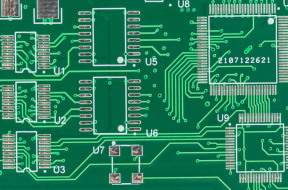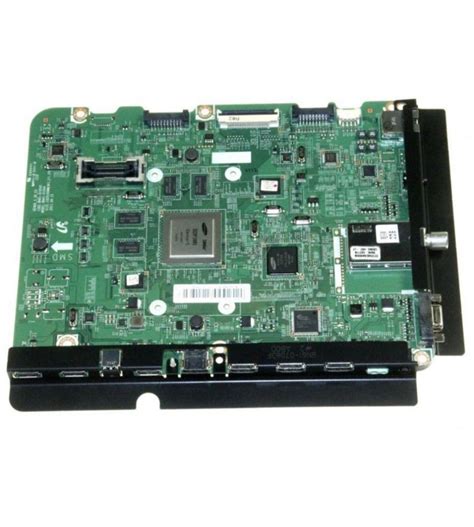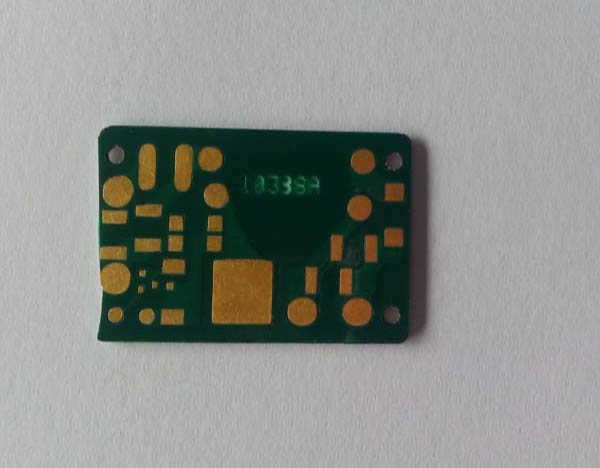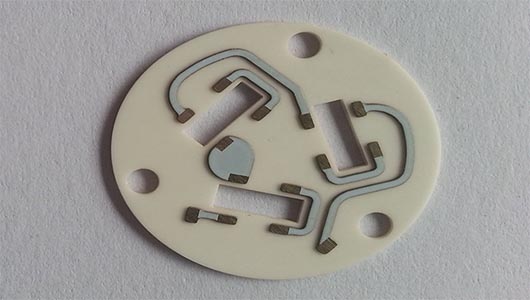ceramic capacitors for pcb
Understanding The Basics Of Ceramic Capacitors
Ceramic capacitors for pcb are fundamental components in the realm of electronics, particularly in printed circuit boards (PCBs). These capacitors are widely appreciated for their reliability, compact size, and cost-effectiveness.
To understand the basics of ceramic capacitors, it is essential to delve into their construction, functionality, and applications.
At the core of a ceramic capacitor lies a dielectric material made of ceramic.
This ceramic material is typically composed of barium titanate or similar compounds, which possess high dielectric constants. The dielectric is sandwiched between two conductive plates, usually made of metal.
The entire assembly is then encapsulated to protect it from environmental factors. The choice of ceramic as the dielectric material is pivotal because it offers excellent electrical properties, including high insulation resistance and low losses.
Ceramic capacitors operate on the principle of storing and releasing electrical energy.
When a voltage is applied across the conductive plates, an electric field is established within the dielectric material, causing it to polarize. This polarization allows the capacitor to store energy. When the voltage is removed, the stored energy is released back into the circuit. This ability to store and release energy makes ceramic capacitors indispensable in various electronic applications.
One of the key advantages of ceramic capacitors is their versatility.
They come in a wide range of capacitance values, from picofarads to microfarads, and can operate at different voltage levels. This versatility makes them suitable for a myriad of applications, from filtering and decoupling to timing and tuning circuits. Moreover, ceramic capacitors exhibit excellent frequency characteristics, making them ideal for high-frequency applications such as RF circuits and signal processing.
In addition to their versatility, ceramic capacitors are known for their stability and reliability.
They have a low equivalent series resistance (ESR) and equivalent series inductance (ESL), which means they can handle high ripple currents and maintain performance over a wide frequency range. Furthermore, ceramic capacitors are less prone to aging and environmental degradation compared to other types of capacitors, such as electrolytic capacitors. This robustness ensures long-term reliability in various operating conditions.
However, it is important to note that ceramic capacitors are not without their limitations.
One of the primary concerns is their temperature coefficient, which can affect capacitance values with changes in temperature. Different types of ceramic materials, classified as Class I and Class II, exhibit varying degrees of temperature stability. Class I ceramics, such as C0G/NP0, offer excellent temperature stability but are limited in capacitance values. On the other hand, Class II ceramics, like X7R and Y5V, provide higher capacitance values but with greater temperature sensitivity.
Despite these limitations, the benefits of ceramic capacitors far outweigh their drawbacks, making them a preferred choice in PCB design.
Their compact size allows for high-density mounting on PCBs, which is crucial in modern electronic devices where space is at a premium. Additionally, their cost-effectiveness makes them an attractive option for mass production.
In conclusion, understanding the basics of ceramic capacitors reveals their indispensable role in electronic circuits. Their construction, functionality, and versatility make them suitable for a wide range of applications. While they do have some limitations, their stability, reliability, and cost-effectiveness ensure their continued prominence in PCB design. As technology advances, ceramic capacitors will undoubtedly remain a cornerstone in the development of innovative electronic solutions

Advantages Of Using Ceramic Capacitors In PCB Design
Ceramic capacitors have become a cornerstone in printed circuit board (PCB) design, offering a multitude of advantages that make them indispensable in modern electronics.
One of the primary benefits of using ceramic capacitors is their exceptional stability and reliability.
Unlike other types of capacitors, ceramic capacitors exhibit minimal variation in capacitance over a wide range of temperatures and frequencies. This stability ensures that the performance of the electronic circuit remains consistent, which is crucial for applications requiring high precision and reliability.
In addition to their stability, ceramic capacitors are known for their low equivalent series resistance (ESR) and equivalent series inductance (ESL).
These characteristics are particularly advantageous in high-frequency applications, where minimizing resistance and inductance is essential for maintaining signal integrity. The low ESR and ESL of ceramic capacitors contribute to reduced power losses and improved efficiency, making them ideal for use in power supply circuits and RF applications.
Another significant advantage of ceramic capacitors is their compact size.
As electronic devices continue to shrink in size, the demand for smaller components has increased. Ceramic capacitors can be manufactured in very small packages without compromising their performance, allowing designers to save valuable PCB real estate. This compactness is especially beneficial in portable and wearable devices, where space is at a premium.
Moreover, ceramic capacitors offer a wide range of capacitance values and voltage ratings, providing designers with the flexibility to choose the most suitable component for their specific application.
This versatility makes ceramic capacitors suitable for a broad spectrum of uses, from decoupling and filtering to timing and energy storage. The availability of various dielectric materials, such as X7R, C0G, and Y5V, further enhances their adaptability, enabling designers to select capacitors with the desired temperature coefficient and stability characteristics.
Furthermore, ceramic capacitors are known for their robustness and durability.
They are less susceptible to damage from mechanical stress and environmental factors compared to other capacitor types. This resilience makes them well-suited for use in harsh environments, such as automotive and industrial applications, where components are exposed to vibrations, temperature fluctuations, and other challenging conditions.
In terms of cost, ceramic capacitors are generally more affordable than other types of capacitors, such as tantalum or film capacitors.
Their lower cost, combined with their excellent performance characteristics, makes them an attractive choice for both high-volume consumer electronics and specialized industrial applications. The widespread availability and cost-effectiveness of ceramic capacitors contribute to their popularity among designers and manufacturers.
Additionally, ceramic capacitors exhibit excellent high-frequency performance, making them ideal for use in RF and microwave circuits
Their ability to handle high frequencies with minimal loss ensures that they can effectively filter and decouple signals in communication devices, radar systems, and other high-frequency applications. This high-frequency capability, coupled with their low parasitic elements, makes ceramic capacitors a preferred choice for designers working on advanced electronic systems.
In conclusion, the advantages of using ceramic capacitors in PCB design are manifold.
Their stability, low ESR and ESL, compact size, wide range of capacitance values, robustness, cost-effectiveness, and high-frequency performance make them an essential component in modern electronics. As technology continues to evolve, the role of ceramic capacitors in ensuring the reliability and efficiency of electronic circuits will only become more critical, solidifying their position as a fundamental element in PCB design.

How To Choose The Right Ceramic Capacitor For Your PCB
When designing a printed circuit board (PCB), selecting the right ceramic capacitor is crucial for ensuring optimal performance and reliability. Ceramic capacitors are widely used in electronic circuits due to their stability, low cost, and excellent frequency characteristics. However, with a plethora of options available, choosing the right one can be daunting. To make an informed decision, several factors must be considered, including capacitance value, voltage rating, temperature coefficient, and physical size.
Firstly, the capacitance value is a fundamental parameter that determines how much charge a capacitor can store.
It is essential to match the capacitance value with the requirements of your circuit. Too low a capacitance may result in insufficient filtering or decoupling, while too high a value could lead to unnecessary bulk and cost. Therefore, it is advisable to refer to the circuit design specifications and select a capacitor with a capacitance value that meets those needs.
In addition to capacitance, the voltage rating of a ceramic capacitor is another critical factor.
The voltage rating indicates the maximum voltage the capacitor can handle without breaking down. It is prudent to choose a capacitor with a voltage rating that exceeds the maximum voltage expected in the circuit. This provides a safety margin and ensures the capacitor’s longevity. For instance, if your circuit operates at 12V, selecting a capacitor with a 25V rating would be a wise choice.
Moreover, the temperature coefficient of a ceramic capacitor, often denoted by a three-character code such as X7R or C0G, describes how the capacitance value changes with temperature. Different applications may require capacitors with specific temperature coefficients. For example, C0G capacitors offer excellent stability and are suitable for precision applications, while X7R capacitors are more versatile and can be used in general-purpose applications. Understanding the temperature coefficient requirements of your circuit will help you select a capacitor that maintains performance across varying temperatures.
Furthermore, the physical size of the capacitor is an important consideration, especially in compact PCB designs.
Ceramic capacitors come in various package sizes, such as 0402, 0603, and 0805. Smaller packages are beneficial for high-density PCB layouts but may have lower capacitance values and voltage ratings. Conversely, larger packages can accommodate higher capacitance and voltage ratings but occupy more space. Balancing the physical size with the electrical requirements of your circuit is essential for an efficient design.
Additionally, it is worth noting that the dielectric material used in ceramic capacitors affects their performance characteristics.
Common dielectric materials include NP0 (C0G), X7R, and Y5V. NP0 capacitors offer high stability and low loss, making them ideal for high-frequency applications. X7R capacitors provide a good balance between performance and cost, suitable for a wide range of applications. Y5V capacitors, while cost-effective, exhibit significant capacitance variation with temperature and voltage, making them less suitable for precision applications.
In conclusion, selecting the right ceramic capacitor for your PCB involves careful consideration of several factors, including capacitance value, voltage rating, temperature coefficient, physical size, and dielectric material. By thoroughly understanding the requirements of your circuit and the characteristics of available capacitors, you can make an informed choice that ensures optimal performance and reliability. Taking the time to evaluate these parameters will ultimately contribute to the success of your PCB design.

Common Issues And Solutions With Ceramic Capacitors In PCB Applications
Ceramic capacitors are a staple in printed circuit board (PCB) applications due to their reliability, compact size, and cost-effectiveness. However, like any component, they are not without their challenges. Understanding common issues and their solutions can significantly enhance the performance and longevity of your PCB designs.
One prevalent issue with ceramic capacitors is their susceptibility to mechanical stress.
These components are often subjected to various forms of stress during the manufacturing process, such as soldering and thermal cycling. Mechanical stress can lead to cracks in the ceramic material, which may not be immediately apparent but can cause failures over time. To mitigate this, it is crucial to use capacitors with flexible terminations that can absorb some of the stress. Additionally, implementing proper handling and soldering techniques, such as preheating the PCB before soldering, can reduce the risk of inducing mechanical stress.
Another common problem is the phenomenon known as microphonic effect, where the capacitor acts like a microphone, converting mechanical vibrations into electrical noise.
This can be particularly problematic in high-frequency applications where signal integrity is paramount. To address this, designers can opt for capacitors with a lower microphonic effect, such as those made from C0G/NP0 materials. Furthermore, placing the capacitors in locations on the PCB that are less prone to mechanical vibrations can also help minimize this issue.
Temperature stability is another critical factor to consider.
Ceramic capacitors can exhibit significant changes in capacitance with temperature variations, especially those made from X7R or Y5V materials. This can lead to performance inconsistencies in temperature-sensitive applications. To counteract this, selecting capacitors with a more stable temperature coefficient, such as C0G/NP0, can provide better performance. Additionally, incorporating temperature compensation techniques in the circuit design can help maintain consistent performance across a range of operating temperatures.
Parasitic inductance and resistance are also concerns that can affect the performance of ceramic capacitors in high-frequency applications.
These parasitic elements can introduce unwanted impedance, leading to signal degradation. To minimize parasitic effects, it is advisable to use capacitors with low equivalent series resistance (ESR) and equivalent series inductance (ESL). Moreover, careful PCB layout practices, such as placing capacitors close to the load and using wide, short traces, can further reduce parasitic inductance and resistance.
Electrostatic discharge (ESD) is another potential issue that can damage ceramic capacitors.
ESD events can cause immediate failure or latent damage that manifests later. To protect against ESD, incorporating ESD protection devices and ensuring proper grounding and shielding in the PCB design are effective strategies. Additionally, using capacitors with higher voltage ratings than the expected operating voltage can provide an extra margin of safety against ESD events.
Lastly, aging is a natural phenomenon that affects ceramic capacitors, leading to a gradual decrease in capacitance over time.
This is particularly noticeable in capacitors made from high dielectric constant materials like X7R and Y5V. To mitigate the effects of aging, it is essential to account for this degradation in the initial design phase by selecting capacitors with a higher initial capacitance value than required. Regular testing and maintenance can also help identify and replace aging capacitors before they impact the overall performance of the PCB.
In conclusion, while ceramic capacitors are indispensable in PCB applications, they come with their own set of challenges. By understanding these common issues and implementing the appropriate solutions, designers can ensure the reliability and efficiency of their PCB designs. Through careful selection of capacitor materials, thoughtful PCB layout, and proactive maintenance, the potential pitfalls associated with ceramic capacitors can be effectively managed.






